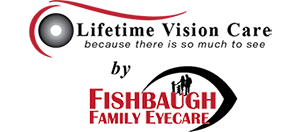Services
Comprehensive Eye Examinations
Dry Eye Therapy
Fishbaugh Family Eyecare has been named a Dry Eye Center of Excellence
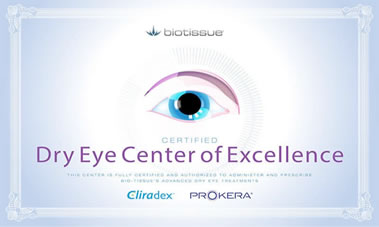
Fishbaugh Family Eyecare has been certified to prescribe and administer advanced treatments for Dry Eye Disease by Bio-Tissue, the industry leader in regenerative tissue therapies and ocular hygiene products for lid margin and ocular surface diseases.
What is Chronic Dry Eye Disease?
Your tears function to protect the eyes and keep them lubricated and comfortable. Chronic Dry Eye Disease (CDED) is the decline of the quantity and/or quality of the tears produced. It is caused when the tear glands do not produce enough tears, or they don’t produce the right kind of tears. The phenomenon causes irritation, scratchiness, burning, redness, and discomfort. Chronic Dry Eye Disease is the most common of all eye disorders, affecting approximately 20% of our population. Chronic Dry Eye Disease can lead to vision loss.
What Causes Dry Eyes?
CDED has many causes, which explains why millions are affected. The most common causes include:
- The Aging Process: Tear flow normally decreases with age. In fact, approximately 75% of individuals over age 65 suffer from CDED symptoms.
- Contact Lens Wear: Contact lens wear can dramatically increase tear evaporation causing discomfort, infection, and/or increased protein deposits. Research shows that CDED is the leading cause of contact lens intolerance.
- Hormonal Changes in Women: Various hormonal changes associated with pregnancy, oral contraceptives, and menopause can contribute to CDED.
- Environmental Factors: People who are exposed to smoke, air pollution, high altitude, sunny, windy, cold or dry air conditions are at risk for CDED.
- Side Effects of Disease/Medications: There are several diseases and medications which can lower your ability to produce tears. Be sure to give your doctor a complete medical history.
- Sjögren’s Syndrome: An immune system disorder characterized by inflammation and dryness of the mouth, eyes, and other mucous membranes. This disorder damages the lacrimal glads and affects tear production.
- Laser Vision Corrective Surgeries: Following various ophthalmic surgical procedures, patients may develop CDED. Many patients have benefited from temporary punctual occlusion following such procedures.
How is Dry Eye Diagnosed?
Accurately diagnosing dry eye is the critical first step to implementing a proper treatment plan. Dry eye disease can be diagnosed through a comprehensive exam from your eye doctor, which may include:
- Symptom questionnaire
- Physical examination of the eyelids and cornea
- Measurement of the quantity & quality of tears
- Diagnostic tests that measure tear composition
What is InflammaDry®?
InflammaDry is a diagnostic test that can be performed in your eye doctor’s office to test your tears for the presence of inflammation. Inflammation may increase as dry eye progresses into a chronic condition, and if left untreated, can potentially damage the cells on the surface of your eye. By using the InflammaDry test to determine if there is an above normal level of inflammation on the surface of your eye, your eye doctor can determine the best and most appropriate dry eye treatment plan for you.
How does InflammaDry Work?
To perform the InflammaDry test, tears are collected from your lower eyelids. Each eye requires the use of a separate InflammaDry test. A small, soft piece of fabric will be gently dabbed along your lower eyelid to collect tears, very similar to the way a paper towel absorbs liquid from a surface. The tear collection process takes less than a minute and is not painful. Once the tear sample is collected, the InflammaDry test is activated and results are provided before you leave your doctor’s office. A positive InflammaDry test result indicates that there is a significant amount of inflammation on the surface of the eye.
Recommendations
- Scleral Contact Lenses – Scleral contact lenses are rigid contact lenses that rest on the conjunctiva of the eye and trap tears between it and the cornea to help with dryness.
- Restasis – Restasis is a prescription medication that increases tear production.
- Xiidra – Xiidra is a prescription medication used for the treatment of dry eye symptoms.
- Cequa – Cequa is a prescription eye drop that helps increase the production of tears.
- BlephEx – The Meibomian glands are small oil glands found in eyelids. Normally they secrete the outer layer of the tears. Sometimes the glands can get clogged, which means that less oil will make it out to the surface of the eye. This allows tears to evaporate faster, which can lead to dry eye symptoms. BlephEx is a small hand-held tool that is used to clean the eyelid margin and open the clogged Meibomian glands.
- iLux – After the Meibomian glands are opened using BlephEx, then we can use the iLux tool to help express the oil from the glands and improve dry eye symptoms. The iLux machine will heat the oil glands to an appropriate level and then use a gentle squeezing motion to help get the oil moving to the eyelid surface.
- EZ Tears, HydroEye – are vitamins that include omega-3 fatty acids to fight dry eye from the inside of the body.
- Lubricating Eye Drops – There are several over-the-counter medications that we can help you choose from.
- Punctal Occlusion – As the name suggests, these devices block the tear duct, which is the drainage duct that carries tears away from the surface of the eye. Blocking these drainage ducts prevents tears from draining away too quickly. Punctal occlusion can be compared to putting a stopper on a sink drain, keeping the tears in the eye’s surface for longer periods. This widely performed procedure is safe, quick, painless, and totally reversible. Punctal occluders are made of soft, flexible silicone, similar to that used in contact lenses. Though they are barely visible to the naked eye, they are carefully manufactured into an extremely smooth and precise design.
- FreshKote – FreshKote is a lubricant that stabilizes the tear film, provides high oncotic pressure, assists healing of the ocular surface, enhances wettability of the ocular surface, and helps to restore proper osmolarity of the tear film. With its patented polymer blending, FreshKote is uniquely formulated to treat all 3 layers of the tear film. FreshKote completely wets the ocular surface, even the hydrophobic areas, with its synergistic patented blending.
- Prokera – Prokera is a therapeutic device used by eye doctors around the world to protect, repair, and heal damaged eye surfaces. Prokera is made by clipping a piece of amniotic membrane tissue in between two rings made out of a clear, flexible material. Eyes treated with Prokera have quicker healing, less pain, less scarring, and less inflammation. The amniotic membrane in Prokera is thin and clear like the tissue on the surface of your eye and protects your eye’s damaged tissue while inserted. Read more.
- TempSure Envi – TempSure uses radio frequency waves and gentle heat to stimulate the Meibomian glands in the eyelids to help with the release of the oil that makes up the outer layer of the tears.
Workers Compensation
Contact Lenses
- Scleral contact lenses
- Soft contact lenses
- Gas permeable contact lenses
- Astigmatism-correcting contact lenses
- Bifocal contact lenses
- Monovision
- Keratoconus
- Myopia-control contact lenses – See Myopia Control below
A few contact lens brands we offer
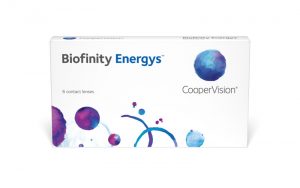

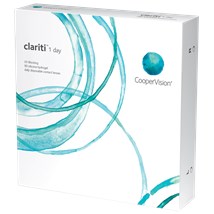
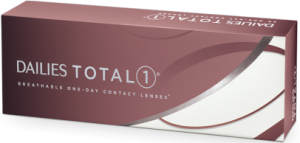
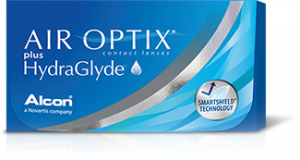
Treatment of Eye Diseases
Treatment of Eye Infections
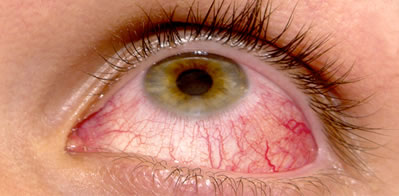
Foreign Body Removal
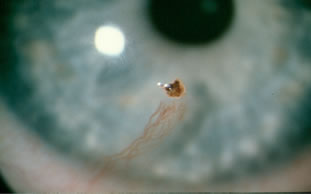
Laser Vision/Refractive Surgery Consulations
Myopia Control
Myopia (or nearsightedness) is become more and more common in young children and happening at a faster rate. Studies are being done to find ways to slow down the progression of myopia. Currently there are three ways this is done.
- Atropine therapy: Atropine is a dilating drop, but in the case of myopia control, it is diluted by a pharmacist to make it very weak. If a child is put on atropine therapy, one drop is put in both eyes at bedtime.
- Soft bifocal contact lenses: Some studies show that myopia can be slowed by having a child wear soft bifocal contact lenses. The child will be trained on the techniques for inserting and removing the contact lens and how to take care of them.
- Corneal Reshaping Therapy (CRT): CRT involves the use of a specially-designed gas permeable contact lens to reshape the front of the eye while a child is sleeping. The contact lens is removed during the day.
- Soft bifocal contact lenses: Some studies show that myopia can be slowed by having a child wear soft bifocal contact lenses. The child will be trained on the techniques for inserting and removing the contact lens and how to take care of them.
- MiSight 1-Day (this is the only FDA approved treatment specific for myopia control)
- Naturalvue 1-Day
Infantsee
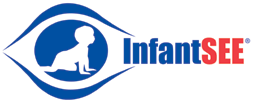 Our doctors are registered to see patients through the InfantSee Program. InfantSee allows for any child age 6-12 months to have a free eye exam. An early evaluation is very important to determine if a child is at risk for eye or vision disorders. Many of these conditions can be identified and best treated when discovered before 12 months of age.
Our doctors are registered to see patients through the InfantSee Program. InfantSee allows for any child age 6-12 months to have a free eye exam. An early evaluation is very important to determine if a child is at risk for eye or vision disorders. Many of these conditions can be identified and best treated when discovered before 12 months of age.
InfantSee is a public health program designed to ensure that eye and vision care becomes an integral part of infant wellness care to improve a child’s quality of life. Under this program, American Optometric Association (AOA) member optometrists will provide a comprehensive infant eye assessment within the first year of life as a no cost public health service.
For more information, please visit www.infantsee.org.
Genetic Testing
Macula Risk
Macula Risk is a genetic test for patients that have macular degeneration. Genetic testing can be done with a simple swab of the inside of the cheek. The report that we receive back from the lab tells us how likely a patient is going to have progression with macular degeneration. The report also recommends the type of eye vitamins the patient should take in order to attempt to slow the progression.
Vita Risk
Vita Risk is a genetic test for patients that have macular degeneration.Genetic testing can be done with a simple swab of the inside of the cheek. The report that we receive back from the lab recommends the type of eye vitamins the patient should take in order to attempt to slow the progression of macular degeneration.
Sjögren’s testing
Sjögren’s Syndrome is an auto-immune disease in which a person’s own body attacks its moisture-producing glands. It is associated with dry eyes, dry mouth, fatigue, and muscle/joint pain. The Sjögren’s test is genetic testing where we prick the tip of your finger and have a couple of drops of blood analyzed by a lab for Sjögren’s Syndrome.
Vision Therapy
A child can’t learn to read when the words get jumbled up on the page and he/she can’t remember or make sense of what was just read. Current research indicates that approximately 1 out of 4 children have vision problems which interfere with their ability to thrive.
Why are learning related vision problems so epidemic? Vision is a learned skill, just like learning to walk or to talk. In the past 30 years, games that encourage the development of a good vision skills have been replaced by passive visual activities such as watching television, video, and computer screens.
The average child watches 6,240 hours of television before entering first grade. Many children are programmed for academic failure simply because their visual systems are not sufficiently developed to cope with the demand of reading and writing tasks at the kindergarten and first grade levels.
Behavioral Indications of Possible Vision Difficulty
- Dislike or avoidance of close work
- Short attention span for the child’s age or frequent daydreaming.
- Turning or tilting head to use one eye only or closing/covering one eye.
- Placing head close to book or desk when reading or writing.
- Excessive blinking or rubbing of eyes.
- Losing place while reading or using finger as marker to guide eyes.
- Trouble finishing written timed assignments.
- Difficulty remembering what is read.
- Omitting, repeating, and miscalling words or confusing similar words.
- Persistent letter or number reversals after second grade.
- Difficulty with sequential concepts.
- Poor eye-hand coordination when copying from chalkboard, throwing or catching a ball, buttoning or unbuttoning clothing or tying shoes.
- Displaying evidence of developmental immaturity.
Complaints Associated With Using the Eyes
- Headaches, nausea, and dizziness.
- Burning or itching eyes.
- Blurring of vision at any time.
- Double vision.
Parent testimonial
“When you’re in a conference with your child’s teacher, the last thing you expect to hear is that your child is reading at a grade and a half level lower that she should be. Knowing that reading is a fundamental foundation for learning, you’re mind is searching for some “quick fix.” As a parent, nothing feels worse than thinking you’ve dropped the ball somehow. Mentioning the struggles to Dr. Fishbaugh, we were advised to consider vision therapy. Yes, there are weekly visits. Yes, there are home study exercising for weeks and months and yes, insurance doesn’t like to consider it a medical condition. Bearing all that in mind, until you get that phone call that says, “Hey what are you doing differently at home, she’s really improving.” Now you start to realize things are happening as you see the confidence blooming in your child when they read fluently to you. Then finally, the test scores come home and it all comes together….Vision Therapy did this for us…In our minds, it was worth everything we put into it.”
Anonymous
Sight for Students
Scleral contact lenses
Scleral contact lenses are a large gas permeable (hard) contact lens that vault the cornea and rest on the sclera, or the white part of the eye. These lenses are often used to treat vision loss from abnormal ocular surface conditions, such as keratoconus, corneal dystrophies, or dry eye disease. Since the lens is filled with a tear-reservoir, it makes any ocular surface a smooth refractive surface, providing crisp, clear vision. These lenses can also be used to correct vision in those who struggle wearing soft or RGP contact lens, including patients with astigmatism and presbyopia, and are often initially more comfortable than a RGP contact lens. Should you and your doctor decide this lens is right for you, the fitting process will begin using a topography, or scan of the front surface of both eyes to measure the exact curvature of the eye. The fitting process for a scleral lens is much more specific than fitting for a soft contact lens, since this lens is ordered specifically for the eye it will be fit on.
Come See the Difference at Fishbaugh Family Eyecare
Contact us today, we are ready to answer your questions. Schedule your appointment at one of our two locations.
